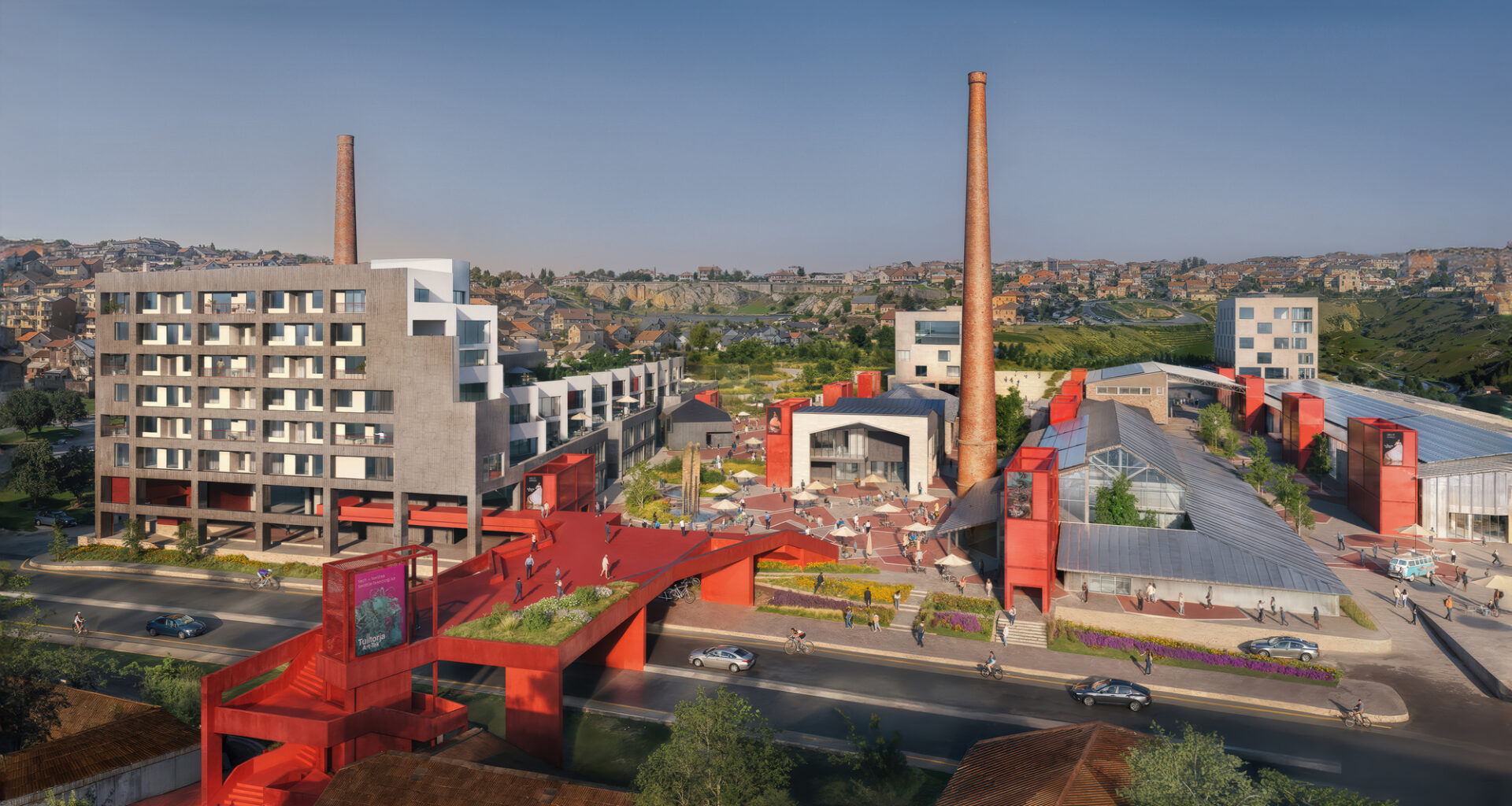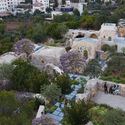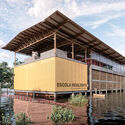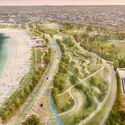 Art Tek Tulltorja by Rafi Segal A+U, Office of Urban Drafters, Org Permanent Modernity, and Studio RevArt. Image © Holcim Foundation for Sustainable Construction
Art Tek Tulltorja by Rafi Segal A+U, Office of Urban Drafters, Org Permanent Modernity, and Studio RevArt. Image © Holcim Foundation for Sustainable Construction
Share
Share
Or
https://www.archdaily.com/1036257/grand-prize-winners-announced-for-the-2025-holcim-foundation-awards
The Holcim Foundation for Sustainable Construction has announced the Grand Prize Winners of the 2025 Holcim Awards, selecting one project from each global region to represent the most impactful approaches to sustainable design in this cycle. This edition marks the introduction of the Grand Prize format, replacing the previous tiered distinctions to better acknowledge diverse regional contexts and avoid hierarchical rankings. Evaluated by juries chaired by Sou Fujimoto (Asia Pacific), Kjetil Trædal Thorsen (Europe), Sandra Barclay (Latin America), Lina Ghotmeh (Middle East and Africa), and Jeanne Gang (North America), the winning projects reflect the Foundation’s principles of holistic, transformational, and transferable design.
Across the five regions, the 2025 laureates demonstrate diverse approaches to sustainable design, ranging from adaptive reuse and cultural regeneration to climate-resilient public infrastructure and heritage conservation. In Asia Pacific, Form.3 Architects’ Old Dhaka Central Jail project integrates historic structures into a dense urban context. Europe‘s Art-Tek Tulltorja redevelops a former industrial site as an inclusive cultural and technological hub. In Latin America, an elevated school model proposes a pragmatic response to flood-prone conditions. Qalandiya’s rehabilitation in the Middle East and Africa applies incremental, community-led restoration strategies, while North America‘s Moakley Park advances coastal resilience through landscape-based interventions. Together, the winners illustrate the varied ways sustainability is being interpreted across different geographies.
Read on to discover the 2025 Holcim Foundation Awards Grand Prize Winners.
Related Article Holcim Foundation for Sustainable Construction Reveals 20 Winning Projects of the 2025 Holcim Awards Old Dhaka Central Jail Conservation by Form.3 Architects, in Dhaka, Bangladesh  Old Dhaka Central Jail Conservation by Form.3 Architects. Image © Holcim Foundation for Sustainable Construction
Old Dhaka Central Jail Conservation by Form.3 Architects. Image © Holcim Foundation for Sustainable Construction
The conservation of Old Dhaka Central Jail reimagines a historically significant, disused site as a publicly accessible space integrated within the city’s dense urban fabric. Employing passive cooling strategies, adaptive reuse of existing structures, and sustainable landscape interventions, the project aims to reduce energy demand while enhancing local biodiversity. A participatory planning process involved local craftspeople, preserving traditional techniques such as lime-mortar plaster and cast-iron jali screens, reinforcing cultural continuity. The revitalized complex incorporates museums, retail spaces, and recreational facilities, supporting economic viability. New buildings reference the local vernacular, establishing a coherent dialogue between the site’s heritage and its contemporary functions.
The Holcim Foundation Awards APAC jury recognized the project’s huge positive impact in an extremely dense urban context, transforming a place of punishment into one where residents can truly enjoy city life. Jurors were impressed by how thoroughly resolved the proposal is: it retains and rehabilitates historic structures, adds appropriately scaled new buildings, and even integrates a needed public road through the site to ease trafficc, all without losing sight of the community’s needs.
Art Tek Tulltorja by Rafi Segal A+U, Office of Urban Drafters, Org Permanent Modernity, and Studio RevArt, in Pristina, Kosovo 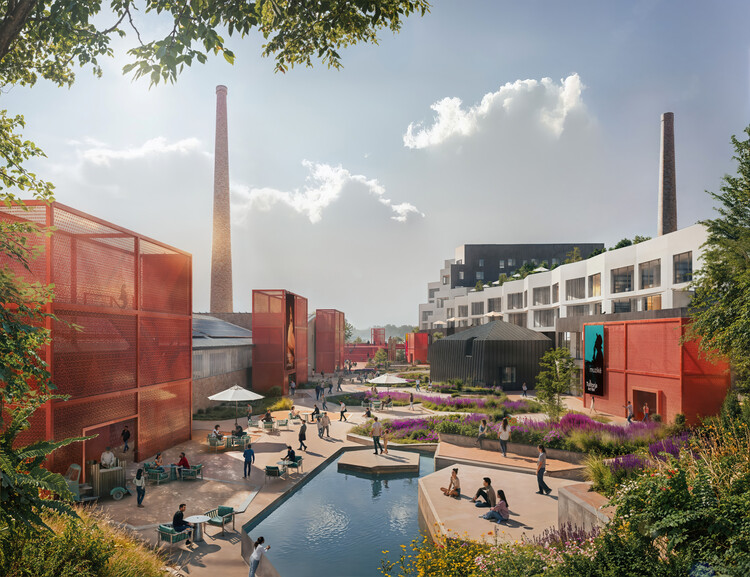 Art Tek Tulltorja by Rafi Segal A+U, Office of Urban Drafters, Org Permanent Modernity, and Studio RevArt. Image © Holcim Foundation for Sustainable Construction
Art Tek Tulltorja by Rafi Segal A+U, Office of Urban Drafters, Org Permanent Modernity, and Studio RevArt. Image © Holcim Foundation for Sustainable Construction
Art-Tek Tulltorja repurposes a former brick factory in Pristina as an art and technology hub, advancing adaptive reuse and cultural regeneration in a post-conflict urban context. Prioritizing sustainability, the project incorporates solar energy systems, recycled industrial materials, carbon-storing timber construction, and extensive planting to improve air quality and biodiversity. Designed as a community-oriented destination, it introduces maker studios, educational spaces, and public parks that support youth employment and social cohesion. By connecting the city center with historically underserved neighborhoods, the 16-hectare redevelopment transforms the industrial site into a “bricks to bytes” urban landscape. Positioned as an ecological, economic, and socially inclusive asset for Kosovo, the project offers a transferable model for sustainable revitalization across comparable European contexts.
The jury for Europe praised Art-Tek Tulltorja as a catalyst for sustainable urban revival. Jurors noted that in post-conflict Kosovo, this project’s holistic vision – spanning environmental remediation, cultural programming, and economic development – could have an outsized impact. They deemed its multi-layered approach to adaptive reuse, clean energy, and community inclusion exemplary of the Foundation’s sustainability goals. Rather than relying on architectural ‘wow factor’ alone, the design emphasizes smartly transforming the site to empower Pristina’s people.
Schools for Flood-Prone Areas by Andrade Morettin Arquitetos Associados and Sauermartins, in Porto Alegre, Brazil 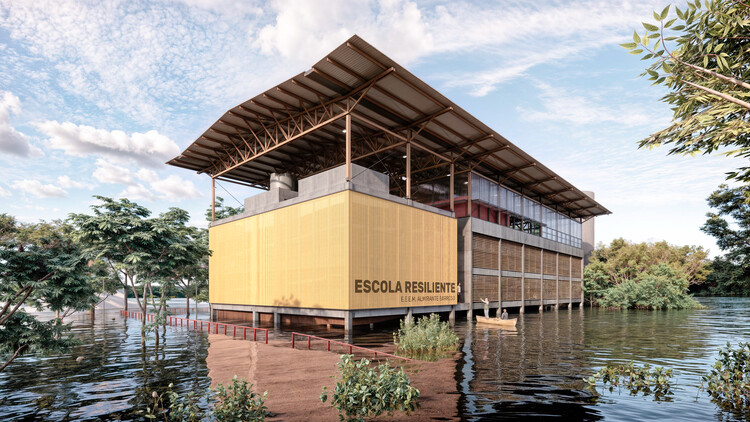 Schools for Flood-Prone Areas by Andrade Morettin Arquitetos Associados and Sauermartins. Image © Holcim Foundation for Sustainable Construction
Schools for Flood-Prone Areas by Andrade Morettin Arquitetos Associados and Sauermartins. Image © Holcim Foundation for Sustainable Construction
This project proposes a new approach to public education infrastructure in Latin America’s flood-prone regions by designing with, rather than against, natural conditions. New classrooms, laboratories, and libraries are elevated above the existing school, while the flood-prone ground level is reconfigured as an open-air playground and sports area. A shaded rooftop terrace provides additional outdoor learning space and also functions as an emergency shelter for the surrounding community, expanding the school’s role during crises. Using local materials and passive strategies, the project offers an adaptable and scalable model for resilient educational facilities in vulnerable contexts.
Jurors noted how the project’s simple design interventions elegantly solve complex problems – a concept likely to influence many other towns facing similar challenges. By proving that a modest school can be innovatively adapted to climate realities, this project provides a transferable blueprint for sustainable construction in vulnerable regions across Latin America and beyond. The jury was also impressed by the project’s commitment to public education, highlighting its role in inspiring students to face future challenges.
Qalandiya: the Green Historic Maze by Riwaq – Centre for Architectural Conservation, in Qalandiya, Palestine 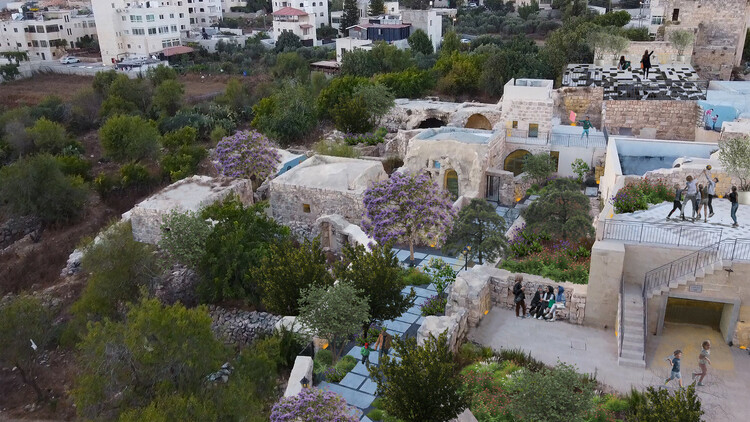 Qalandiya: the Green Historic Maze by Riwaq – Centre for Architectural Conservation. Image © Holcim Foundation for Sustainable Construction
Qalandiya: the Green Historic Maze by Riwaq – Centre for Architectural Conservation. Image © Holcim Foundation for Sustainable Construction
The rehabilitation of Qalandiya’s historic village center adopts an incremental, sustainable approach to reviving an area long affected by neglect tied to the region’s political circumstances. Using traditional knowledge, local stone masonry, and native materials, deteriorated structures are restored for public use. Climate-responsive strategies such as passive insulation, graywater separation, rainwater harvesting, permeable paving, and native planting strengthen environmental resilience. Community participation ensures cultural sensitivity and local ownership, generating more than 13,800 artisan workdays. Supported by an economic model that leases restored spaces at affordable rates, the project reinvests revenue into maintenance, creating safer public areas and reinforcing the village’s collective identity.
The jury commended the project for its thoughtful approach to heritage conservation, acknowledging its high level of sensitivity to complex social and political contexts, as well as its emphasis on knowledge generation and sharing. Jurors emphasized the project’s careful participatory approach, which involved residents deeply in the design and restoration processes, thereby fostering local ownership and stewardship. They were also impressed by how the resulting architecture created comfortable spaces for people of different ages while subtly restoring historic elements.
Moakley Park by Stoss Landscape Urbanism, in Boston, USA  Moakley Park by Stoss Landscape Urbanism. Image © Holcim Foundation for Sustainable Construction
Moakley Park by Stoss Landscape Urbanism. Image © Holcim Foundation for Sustainable Construction
Moakley Park reimagines one of Boston’s largest waterfront areas as a resilient and accessible public landscape. The project incorporates protective berms, restored coastal marshes, and stormwater management systems to reduce flood risk and support biodiversity. More than 500 new trees and extensive native plantings help mitigate urban heat while strengthening local ecological habitats. Developed through comprehensive community engagement, the plan reflects neighborhood priorities and expands equitable access to recreational spaces. Supported by public-private partnerships and income-generating programs, it contributes to economic and social stability. The project offers a scalable model for climate adaptation, urban resilience, and community wellbeing.
The jury recognized this ambitious yet pragmatic design as a transformative model for urban resilience. Embracing a participatory approach, including thousands of community interactions, the project adeptly addresses Boston’s coastal vulnerability, providing equitable access to inclusive public spaces. The project demonstrates intelligent integration of landscape architecture and stormwater management, with the living shoreline and adaptive berm strategies standing out as exemplary approaches to urban flood defense.
